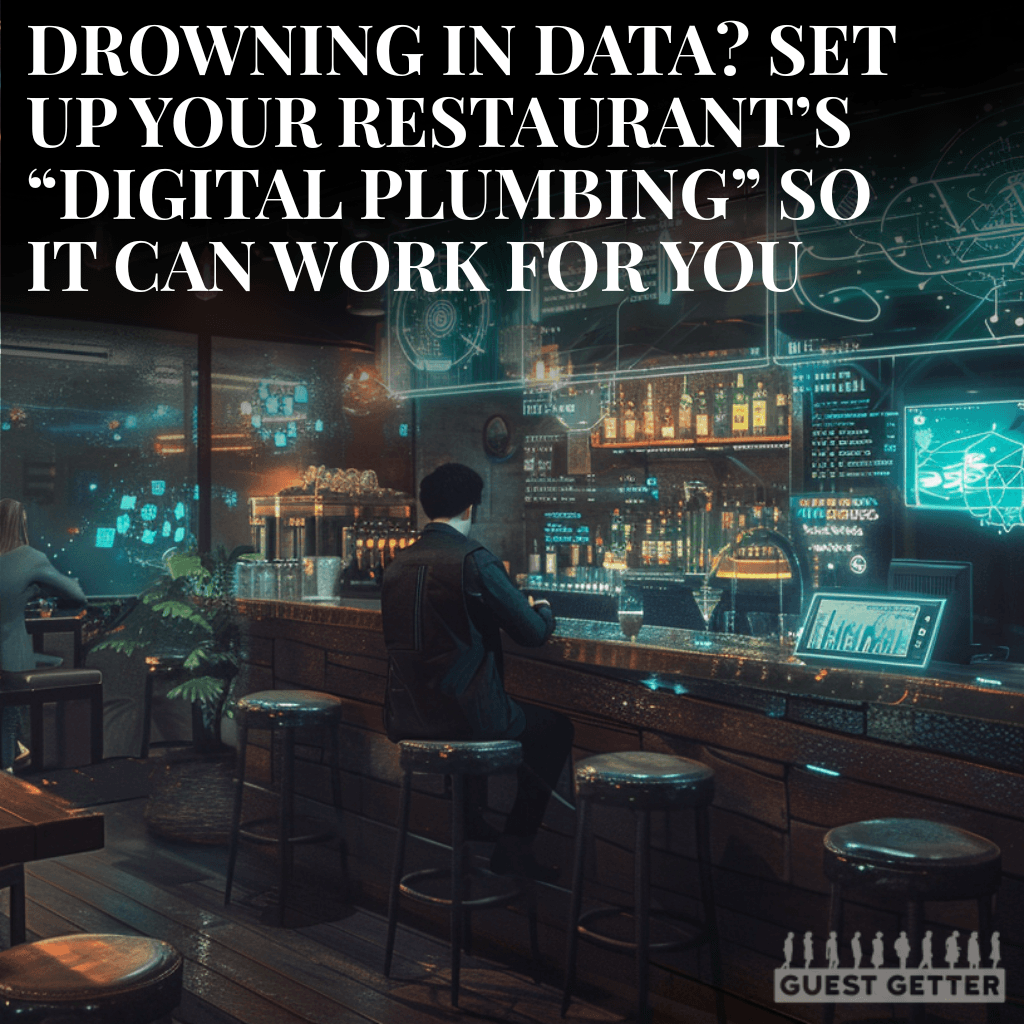The Restaurant Owner’s Guide to Digital Plumbing (How to Wire Your Marketing So It Actually Works)


One of the biggest advantages of marketing your restaurant online is that you can connect data from all kinds of places and help platforms like Meta and Google learn what you actually care about.
That's the heart of what I call digital plumbing — a term I borrowed from Dennis Yu. Sometimes I call it digital electricity. When we onboard a new restaurant, I usually tell them, "We're just electricians on the internet." Our job is to make sure the data flows properly — from your website to your ad platforms to your CRM — so that everything gets smarter over time.
Let me walk you through how I think about this, step by step.
1) Your website is the hub
Your website is the central nervous system of your restaurant’s digital world.
It’s your knowledge base — the place that holds everything about your business:
- Menu
- Your story
- Hours, directions, contact info
- Private dining info, team, behind‑the‑scenes
Think of it as a live encyclopedia for your restaurant. As AI and voice search evolve, this becomes even more important. The more structured, accurate, and up‑to‑date your site is, the easier it is for search engines — and voice assistants — to understand what you offer.
2) Set up conversion tracking (your control panel)
Once your website is in good shape, the next step is conversion tracking — the system that tells you (and your ad platforms) what matters.
The main tool here is Google Tag Manager. It acts like a central hub for all your tracking scripts:
- Google Analytics
- Meta Pixel
- Google Ads tags
- Anything else you want to measure
Inside Tag Manager, set up conversion events for things like:
- Online reservations (OpenTable, Resy, SevenRooms, etc.)
- Private event inquiries
- Online orders
- Newsletter signups
When these are connected, you can send that data back to Meta and Google Ads. That feedback loop is what allows their algorithms to learn what a valuable action looks like — not just clicks or views.
3) Separate ad accounts by brand
If you’re running multiple restaurant brands, don’t cram everything into one ad account. Give each brand its own account — for both Meta and Google.
Why? When data from multiple brands mixes together, you confuse the algorithms. You also make your own reporting and automation way harder to manage.
On the Meta side, make sure your ad account lives inside Business Manager — not just tied to an Instagram profile. Business Manager is where your Facebook Page, Instagram account, ad accounts, pixels, and audiences all live and connect. Without that structure, you’ll constantly run into walls when you try to integrate or optimize.
4) Use both the Meta Pixel and Conversions API
After iOS 14, browser‑based tracking (the Pixel) lost a lot of reliability. That’s why Meta introduced the Conversions API, which tracks events directly from your server — not just the browser.
You want both set up. The Pixel still catches some data from browser activity, while the Conversions API keeps data flowing even if users opt out of tracking. Together, they create a clearer, more complete picture.
Google Ads has a similar setup. The principle is the same: track important events as directly as possible.
5) Build and use audiences
This is the part most restaurant marketers overlook. Ad platforms aren’t just for finding new people — they’re for reconnecting with your best ones.
Build audiences like:
- People who made a reservation or online order
- People who visited your website
- People who watched your videos (for example, 15 seconds or more)
Then:
- Retarget them with offers, events, or loyalty campaigns
- Create lookalike audiences so Meta finds people who behave like your best guests
Example: upload a list of past reservations and tell Meta to find more people like them. That’s free leverage most restaurants don’t even realize they have.
6) Local SEO and rankings (the ground game)
The last piece of digital plumbing is making sure your restaurant shows up when people search for it.
We use tools like:
- SEMrush to track keyword rankings on Google
- Local Falcon to track how your Google Business Profile performs in your area
The goal is to improve visibility for high‑intent searches like "best sushi near me" or "private dining Vaughan." These are the searches that turn into real reservations — not just casual clicks.
The point of all this
Good marketing isn’t just creative campaigns or catchy posts. It’s the infrastructure that allows everything else to work better.
Digital plumbing ensures your data flows correctly — from your website to your ads to your CRM — so that, over time, your marketing doesn’t just spend money… it learns.
That’s how you go from running ads to running a real growth system.
Want help wiring this up for your restaurant? We do this every day. Let’s talk →
